Japan is that special country that is a hodgepodge of traditional and futuristic, serene and frenetic, and mystical and crazy. It’s one of the few countries that is worth going back to over and over. And it’s one of the best places to bring your family. Japan travel with kids has something for everyone at every age.
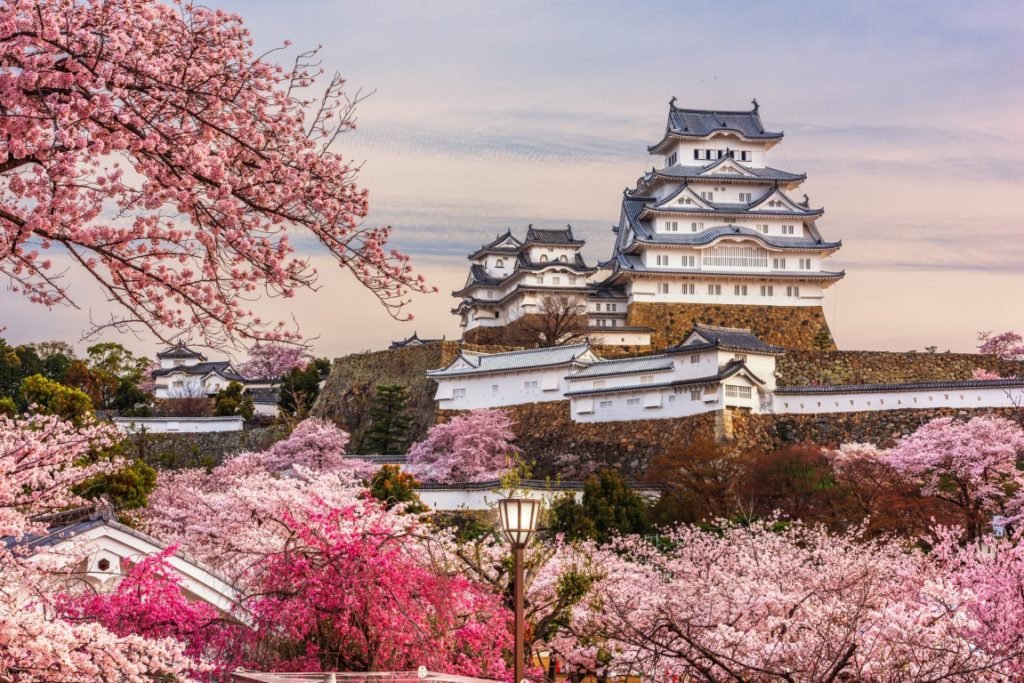
Why Go to Japan With Kids?
Japan is a great destination for families with children for many reasons. Here are a few examples:
- Unique culture: Japan is a fascinating country with a unique culture different from anything children might experience in their own country. Children can learn about traditional Japanese customs and practices, such as tea ceremonies, martial arts, and wearing a kimono.
- Fun and educational activities: Japan offers many fun and educational activities for children, such as visiting theme parks, aquariums, zoos, and science museums. Children can also learn about Japanese history and culture by visiting temples, shrines, and historical sites.
- Popular pop culture: Japan is the home of anime and manga that kids love. From Hello Kitty to Naruto, Gundam to Totoro, Japan has merch, parks, and shows dedicated to beloved characters. Your Japan travel with kids must include trips to Akihabara, Japan’s center of otaku culture.
- Safe and clean environment: Japan is known for being one of the safest and cleanest countries in the world, making it a great place for families to travel. The public transportation system is also highly efficient, making it easy to get around.
- Delicious food: Japan is famous for its delicious and healthy food. Children can try traditional Japanese dishes such as sushi, ramen, and tempura, and many restaurants also offer kid-friendly options.
- Friendly people: Japanese people are known for being kind and helpful, and they often go out of their way to make children feel welcome.
- Family-friendly accommodations: Many hotels in Japan offer family-friendly accommodations, such as connecting rooms and amenities for children, like cribs and high chairs.
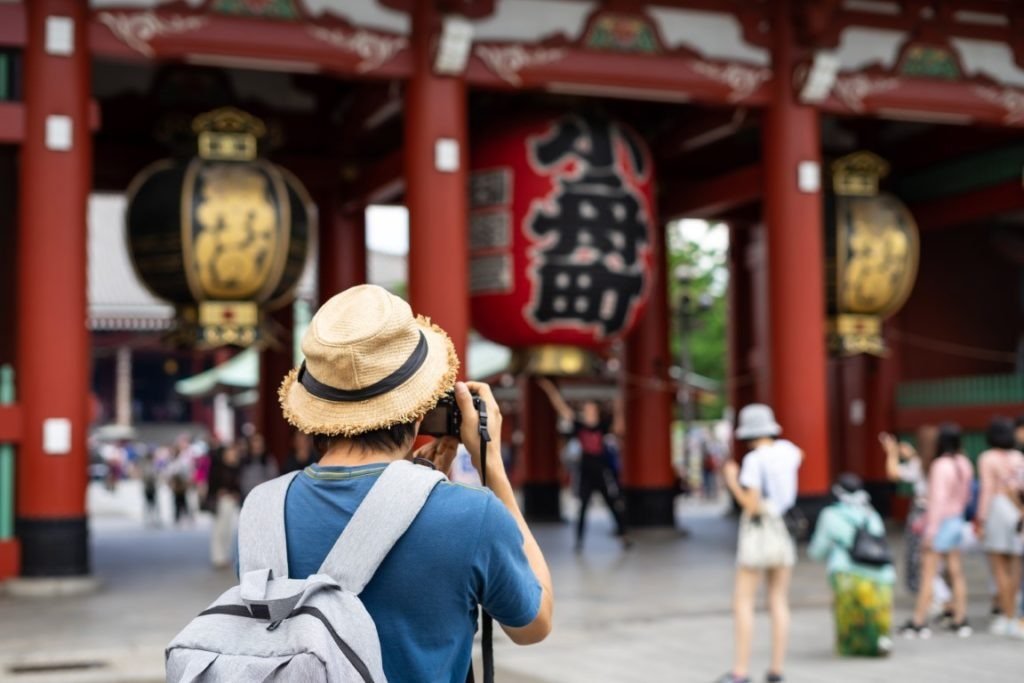
Where to Go in Japan With Kids
Japan has a rich culture and history and offers various destinations for families to visit. Some of the best places to go in Japan include:
- Tokyo – The capital and largest city in Japan, Tokyo offers a unique blend of modern and traditional culture. It’s a bustling metropolis that offers a wide range of activities for families, such as visiting the Tokyo Disneyland and DisneySea theme parks, checking out the hottest fashion in Harajuku, exploring science museums and shopping centers in Odaiba, and visiting the Tokyo Skytree, one of the tallest towers in the world.
- Kyoto – Known as the cultural heart of Japan, Kyoto is home to many ancient temples and shrines, such as the Fushimi Inari Shrine and the Kyoto Imperial Palace. You can also enjoy the beautiful gardens and parks, such as the Arashiyama Bamboo Grove and the famous Kyoto Botanical Garden. It’s a great place to introduce and immerse your family in the history and traditions of Japan.
- Osaka – Osaka is known for its delicious food and lively atmosphere. Your kids will love eating okonomiyaki (savory pancakes) and takoyaki (Octopus balls), both invented in Osaka. You can bring your family to Osaka Castle or the Universal Studios Japan theme park.
- Mount Fuji – Japan’s iconic mountain, Mount Fuji is a UNESCO World Heritage site and offers breathtaking views from the summit. You can hike to the summit during the summer months, or take a guided tour to the 5th station.
- Hokkaido – Japan’s northernmost island, Hokkaido offers a unique blend of natural beauty and outdoor winter activities, such as skiing and snowboarding. Your family can enjoy the beautiful countryside and nature, such as the famous Shikotsu-Toya National Park, or take a dip in the hot springs. Your kids will also like the giant ice sculptures at the Sapporo Snow Festival.
- Nara – A city in the Nara prefecture, Nara is known for its ancient temples and shrines, such as the famous Todai-ji Temple and Kasuga-taisha Shrine. Your kids will love Nara Park, famous for its deer population.
- Okinawa – Japan’s southernmost island, Okinawa offers a tropical paradise with beautiful beaches and clear waters. If you want a warm summer Japan experience, you can go snorkeling and diving in the coral reef or take a trip to the famous Churaumi Aquarium.
- Nikko – A small town located in the mountains of Tochigi prefecture, Nikko is home to many beautiful temples and shrines, such as the famous Toshogu Shrine. You can visit Kegon Falls and Lake Chuzenji.
- Kanazawa – A city in Ishikawa prefecture, Kanazawa is known for its well-preserved traditional culture and architecture. Your family will be mesmerized by its impeccable geisha and samurai districts. You can visit the famous Kenrokuen Garden or take a stroll through the Higashiyama district to see the traditional geisha houses.
- Takayama – A small town in the Japanese Alps, Takayama is known for its Sanmachi Suji historic district’s narrow streets lined with wooden merchants’ houses dating to the Edo Period. You can visit during the biannual Takayama Festival, which celebrates spring and fall with parades featuring ornate, gilded floats, and puppet shows.
If it’s your first time visiting Japan, and you only have a week, your Japan travel with kids must include at least Tokyo and Kyoto.
What to Do in Japan With Kids

Japan offers a wide variety of activities for families to enjoy. Some things to do in Japan with kids include:
- Visit Disneyland and DisneySea – Japan is home to two Disney theme parks: Tokyo Disneyland and Tokyo DisneySea. These parks offer various rides, attractions, and Disney-themed shows and parades.
- Take a trip to a theme park – If you’re looking for other theme parks that are not Disney-owned, you are spoiled for choice. You can go to Universal Studios Japan, Fuji-Q Highlands, Sanrio Puroland, Ghibli Park, and Tokyo Joypolis, among many others. Your Japan travel with kids should include at least one homegrown theme park.
- Visit a zoo or aquarium – Do your kids love animals? You can visit zoos and aquariums, such as Ueno Zoo, Asahiyama Zoo, Wakayama Adventure World, Zoorasia, and others.
- Take a trip to a hot spring – You can’t visit Japan without trying one of its many hot springs called onsen. Dipping and relaxing in a public bathhouse is a unique experience for your family. So make it part of your Japan travel with kids.
- Visit a museum – For a futuristic country, you can expect some of the best science museums in the world, such as the National Museum of Nature and Science and the National Museum of Emerging Science and Innovation. Your kids will learn so much! Japan is also home to world-class art and historical museums.
- Take a trip to a castle – Once a feudal country, Japan is home to many castles, such as the Himeji Castle and the Osaka Castle, which offer a glimpse into Japan’s history and culture.
- Take a trip to a park – Your family will enjoy strolling in Japan’s many beautiful parks, such as Ueno Park and Yoyogi Park. Aside from their natural beauty, special events that families can enjoy are often held there.
- Take a trip to a shrine or temple – Get a glimpse into Japan’s religion and culture. by visiting some of its many shrines and temples, such as the Meiji Shrine and the Senso-ji Temple.
- Take a trip to a garden – Take a break from the hustle and bustle and enjoy a peaceful and serene environment by visiting Japan’s beautiful gardens, such as the Kenrokuen Garden and the Korakuen Garden.
- Take a trip to a ski resort – You may not think of Japan as a ski destination but it has many ski resorts, such as the Niseko Ski Resort and the Furano Ski Resort, which offer a wide variety of ski runs and activities for families to enjoy.
What to See in Japan With Kids
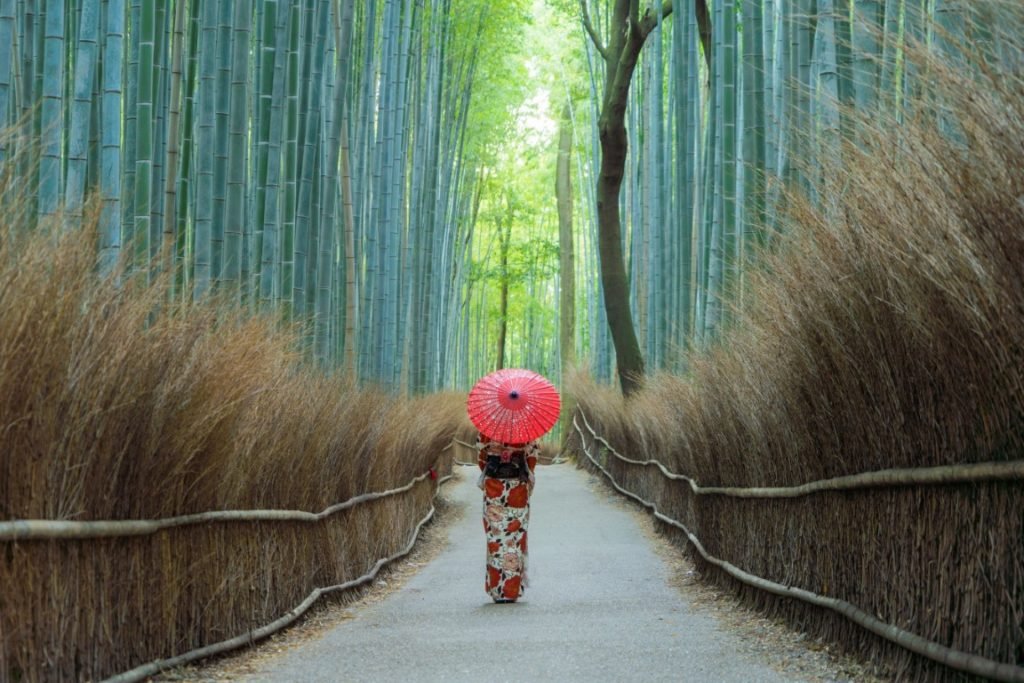
There are plenty of places to see in Japan. Some popular tourist attractions in Japan for families include:
- Tokyo Skytree – This is the tallest tower in Japan, standing at 634 meters. You can take an elevator to the observation deck for a panoramic view of Tokyo. There are also plenty of shops and restaurants at Tokyo Skytree, so your family can spend an entire afternoon here.
- Tokyo Tower – It’s the second-tallest man-made structure in Japan, after Tokyo Skytree, and is one of the most popular tourist attractions in the city. The tower was built in 1958 and was modeled after the Eiffel Tower in Paris.
- Mount Fuji – Mount Fuji is Japan’s highest mountain and a UNESCO World Heritage Site. It is a popular destination for hiking and sightseeing, particularly during the climbing season from July to September. Make this part of your Japan travel with kids.
- Fushimi Inari Shrine – The Fushimi Inari Shrine is located in Kyoto and is known for its thousands of torii gates leading up to the mountain’s summit. Your kids will have fun hiking.
- Kinkaku-ji – Known as “Temple of the Golden Pavilion,” this is a Zen Buddhist temple famous for its most striking feature, the golden pavilion that sits at the center of the temple’s grounds.
- Bamboo Forest – Located in the Arashiyama district of Kyoto, the bamboo forest is a popular spot for visitors to take a leisurely stroll and take in the area’s natural beauty. It can be crowded here, so visit first thing in the morning or at night.
- Kiyomizu-dera – This Buddhist temple is a UNESCO World Heritage Site. It is one of Japan’s most popular tourist destinations, known for its stunning wooden architecture and beautiful gardens.
- Meiji Shrine – The Meiji Shrine is a Shinto shrine dedicated to the deified spirits of Emperor Meiji and his wife, Empress Shoken. It is located in the heart of Tokyo.
- Kyoto Imperial Palace – The Kyoto Imperial Palace is a historic palace and a UNESCO World Heritage Site. It offers a glimpse into the history of Japan’s imperial past.
- Tokyo Imperial Palace – The Tokyo Imperial Palace is the primary residence of the Emperor of Japan. It is located in the heart of Tokyo, surrounded by beautiful gardens and parks.
- Todai-ji Temple – This NESCO World Heritage Site is one of the most famous temples in Japan. It is known for its large bronze Buddha statue, which is the largest in the world.
- Sensō-ji – This Buddhist temple in Asakusa is the oldest temple in Tokyo and one of the most popular tourist destinations in the city. It’s home to Nakamise-dōri, a popular Japanese market that sells souvenirs and traditional Japanese goods.
- Himeji Castle – This UNESCO World Heritage Site is one of Japan’s most famous and well-preserved castles. The castle is located in the city of Himeji in the Hyogo prefecture and is known for its beautiful white exterior and complex layout.
- Osaka Castle – Built in the 16th century, Osaka Castle played a major role in the unification of Japan. The castle is a five-story, eight-sided structure that sits on a stone base and is surrounded by a moat.
- Nijō Castle – This historic castle in Kyoto was built in the 17th century as the residence of the Tokugawa shogun, the military ruler of Japan during the Edo period. The castle is known for its beautiful architecture, intricate carvings, and impressive defensive features.
- Matsumoto-jō Castle – The “Crow Castle” is a beautiful and well-preserved castle located in the city of Matsumoto in Nagano prefecture. It is considered one of Japan’s most complete and beautiful castles and is a National Treasure of Japan.
- Nara Park – This public park in the city of Nara is the home of numerous historical sites and temples, including Tōdai-ji, Kasuga-Taisha, and Kasugayama Primeval Forest, as well as hundreds of freely roaming Sika deer, considered a national treasure of Japan. Your kids will enjoy feeding them.
- Hiroshima Peace Memorial Park – This park in Hiroshima is dedicated to the victims of the atomic bombing of Hiroshima in 1945. Families can visit the Hiroshima Peace Memorial Museum, which provides an understanding of the events of that day and the impact of the atomic bomb.
- Jigokudani Yaen Koen – Also known as Snow Monkey Park, this is a popular tourist destination in the Nagano Prefecture. The park is home to a large population of wild Japanese macaques, also known as snow monkeys, who are known for their love of bathing in hot springs.
- Shirakawa-go – This small village in the Gifu prefecture is famous for its traditional gassho-zukuri farmhouses. The village is a UNESCO World Heritage Site and is considered one of Japan’s most important cultural assets.
Where to Stay in Japan With Kids
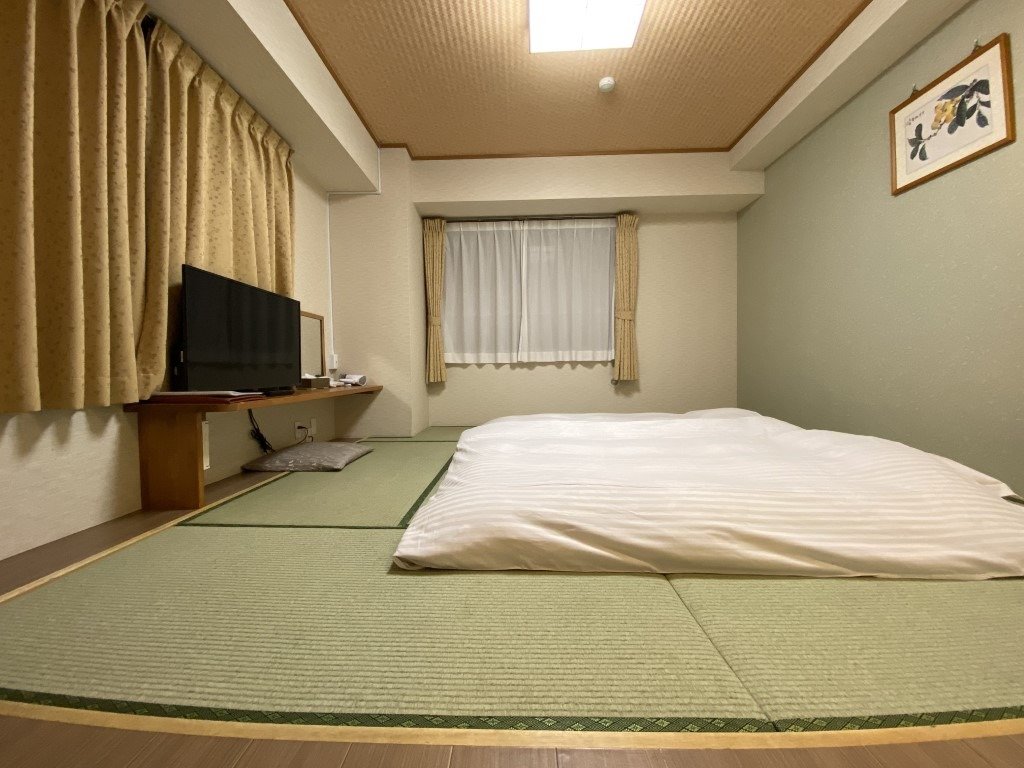
Here are a few options for where to stay for your Japan travel with kids:
- Family-friendly hotels: Many hotels in Japan offer family-friendly rooms or suites, which often come with extra beds or bunk beds for children. Many hotels also offer child-friendly amenities like children’s menus and kid-sized slippers.
- Vacation rentals: Renting a vacation home or apartment can provide more space and privacy for your family. This option also allows you to cook your own meals and save money on eating out.
- Ryokans: A ryokan is a traditional Japanese inn that offers a unique cultural experience. You should really consider staying in one, at least for a night. Many ryokans offer family-friendly rooms, and some even have onsen (hot springs) for families to enjoy together.
- Capsule hotels: While not as common, capsule hotels can be a unique and budget-friendly option for families with older children. Capsule hotels typically have shared bathrooms, but private capsules offer more privacy.
- Yurts and camping: For families who enjoy the great outdoors, camping and glamping options are available in many national parks and other scenic areas. This can be a great way to experience nature and bond as a family.
What to Eat in Japan With Kids
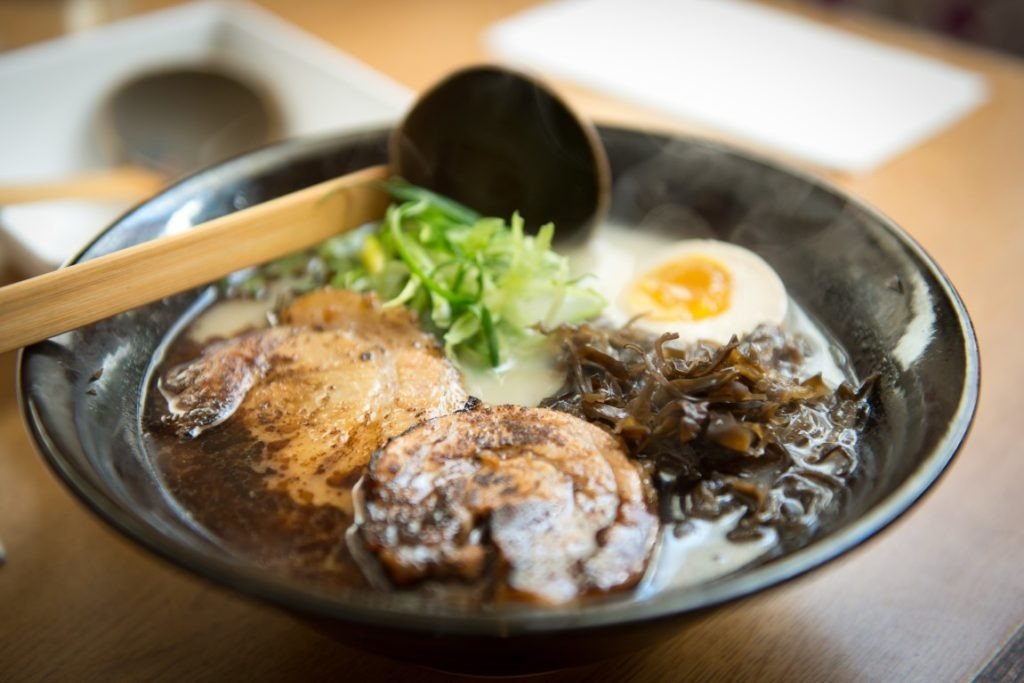
Japan offers a wide variety of delicious and kid-friendly food options for families to try. Here are a few examples of what to eat in Japan with kids:
- Sushi: Sushi is a popular Japanese dish that can be made with a variety of ingredients, including raw fish, vegetables, and eggs. Many sushi restaurants offer child-friendly options, such as sushi rolls with cooked fish or vegetables.
- Ramen: Ramen is a Japanese noodle dish with various flavors, such as soy sauce, miso, and tonkatsu (pork broth). It’s a hearty and filling meal that kids usually enjoy.
- Udon: Udon is another type of Japanese noodle, usually thicker than Ramen, that can be served in a hot or cold broth. It’s also a great option for kids.
- Okonomiyaki: Okonomiyaki is a savory pancake that can be filled with a variety of ingredients such as seafood, meat, and vegetables. It’s often served at family-friendly restaurants. Your kids will enjoy watching cooks make them at your table.
- Bento: Bento is a type of Japanese lunch box that can be filled with different ingredients, such as rice, meat, fish, and vegetables. Many convenience stores and supermarkets sell bento boxes, which can be a convenient and cost-effective option for families on the go.
- Takoyaki: Takoyaki are a kind of fried balls that are filled with diced octopus, tempura scraps, green onion, and pickled ginger. These are popular street food, and kids usually enjoy them.
- Mochi: Mochi is a sweet treat made from glutinous rice that can be filled with various sweet fillings, such as sweet red bean paste. It’s a chewy and sweet snack that kids love.
- Ice cream: Japan is known for its delicious ice cream flavors, including matcha (green tea) and black sesame. You can enjoy a sweet treat while exploring the city. And your taste buds can be introduced to unique flavors you won’t find elsewhere.
Your Japan travel with kids is incomplete without trying delicious Japanese food. Skip fast-food chains and eat the local cuisine.
What to Wear in Japan
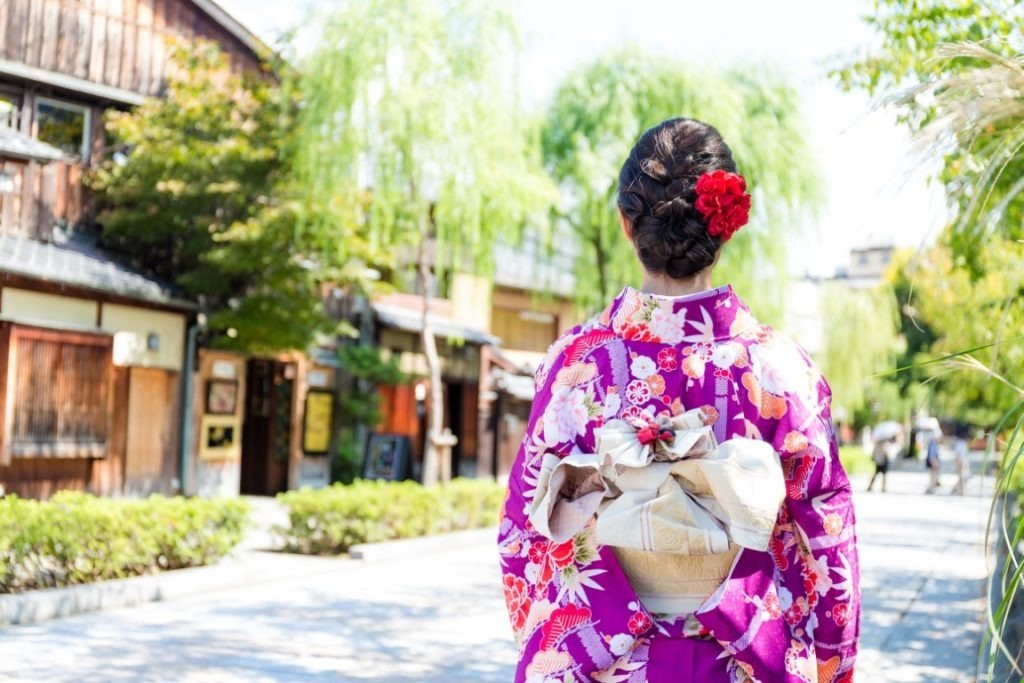
Japan’s weather can vary greatly depending on the season and region, so it’s important to be prepared for your Japan travel with kids. Here are a few tips on what to wear in Japan:
- Use layering: Japan’s weather can change quickly, so it’s a good idea to dress in layers. This allows you to add or remove clothing as needed.
- Prioritize comfort: Japan is walking-friendly, so comfortable shoes are a must. It’s also important to wear clothes that are easy to move in, especially for kids.
- Prepare for rain: Japan experiences rain throughout the year, so it’s a good idea to bring rain gear for the whole family. Lightweight rain jackets and ponchos are good options. Or bring a small umbrella.
- Protect from the sun: Japan’s summers can be hot and humid, so protecting yourself and your kids from the sun is important. Bring hats, sunglasses, and sunscreen.
- Be culturally sensitive: Japan is a conservative country, and it’s considered polite to dress modestly, especially when visiting shrines and temples. Avoid revealing clothing, and consider bringing a light cardigan or sweater to cover up bare arms in temples or shrines. But certain areas like Harajuku and Shinjuku are more progressive and fashionable, so you can be more daring.
And of course, when you’re there, rent a kimono and stroll in of the well-preserved historic districts.
When to Go to Japan
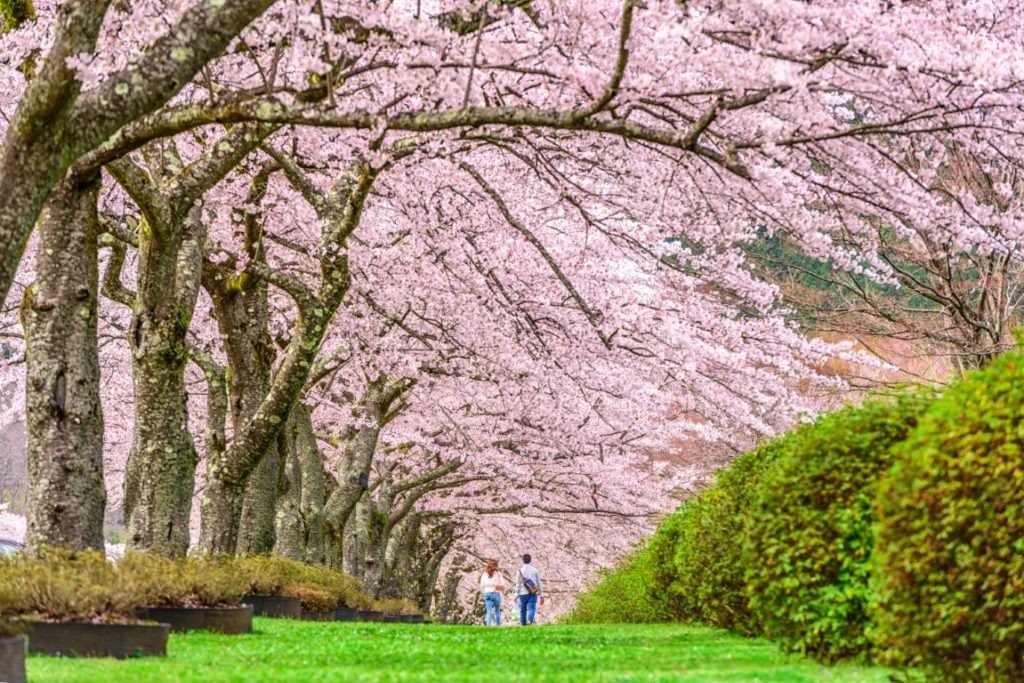
Japan is a beautiful country to visit all year round, but the best time to go depends on the type of experience you’re looking for and the weather conditions. Here are a few things to consider when planning your Japan travel with kids:
- Spring (March-May): Spring is considered the best time to visit Japan. The weather is mild, the cherry blossoms are in full bloom, and the country is filled with vibrant colors. It’s also a great time for families to experience traditional festivals and events. However, this is peak season, so expect crowds.
- Summer (June-August): Japan can be hot and humid during the summer, but it’s also a great time to visit for festivals and events. Many outdoor events, such as fireworks displays and traditional festivals, are perfect for families to enjoy.
- Fall (September-November): Autumn is another great time to visit Japan, with mild weather and beautiful autumn foliage. It’s also a great time to try the country’s delicious seasonal food, such as chestnuts and sweet potatoes.
- Winter (December-February): Japan is also a great destination in winter, with the opportunity to enjoy skiing and other winter sports and also the chance to see snow monkeys in their natural habitat.
How Long to Stay in Japan

Japan is a diverse country with a rich culture, and it’s impossible to see everything in just one trip. However, the length of stay in Japan depends on the time you have and what you want to see. Here are a few things to consider when planning your trip to Japan with kids:
2 weeks: If you want to see the highlights of Japan, such as Tokyo, Kyoto, and Hiroshima. This allows you to see the main cities and also allows for some leisure time to explore the local area.
3 weeks: If you want to see more of Japan and experience different cultures. You can visit additional destinations such as Osaka, Nara, and Hiroshima, and also allows for time to take day trips or visit smaller towns and villages.
4 weeks: If you want to experience the rural side of Japan and explore the country’s natural beauty. This allows you to visit destinations such as the Japanese Alps, the northern island of Hokkaido, or the southern island of Okinawa.
The best way to make the most of your trip is to prioritize the places you want to visit and be realistic about the time you have. Japan has so much to offer that it’s impossible to see everything in one go. You can always plan a second trip to see the places you missed.
It’s also worth considering the age of your children and their interests when planning your trip. Japan is a family-friendly country, but some destinations may be more suitable for older children or teenagers.
1-Week Japan Travel Itinerary
What if you only have one week to visit Japan? It can be hard to decide where to go and what to see. Here’s a suggested 1-week itinerary for a family trip to Japan:
Day 1: Arrive in Tokyo
- After arrival, take a train to your hotel and check in.
- Visit Tokyo’s famous landmarks such as Tokyo Tower or Tokyo Skytree.
- Visit one of the city’s many museums or art galleries.
- Take a stroll through the vibrant streets of Tokyo’s shopping and entertainment districts, such as Shinjuku or Shibuya.
- Have dinner at a traditional Japanese restaurant, such as a sushi or ramen restaurant.
Day 2: Explore Tokyo
- Visit the Imperial Palace and the East Garden, the residence of the Emperor of Japan.
- Explore the historic district of Asakusa and visit the Senso-ji Temple, one of the oldest temples in Tokyo.
- Take a boat trip on the Sumida River to see Tokyo’s famous skyscrapers from a different perspective.
- Visit Tokyo Disneyland or DisneySea, depending on the age of your children.
- Have dinner at a traditional Japanese restaurant, such as an izakaya or yakitori restaurant.
Day 3: Tokyo to Kyoto
- Take a train to Kyoto, the former capital of Japan.
- Visit the Fushimi Inari Shrine, known for its thousands of orange torii gates that lead to the top of the mountain.
- Visit the Kinkaku-ji Temple, also known as the Golden Pavilion.
- Have dinner at a traditional Japanese restaurant, such as a kaiseki or tofu restaurant.
Day 4: Explore Kyoto
- Visit the Nijo Castle, a UNESCO World Heritage site and a fine example of feudal-era palace architecture.
- Visit the Kiyomizu-dera Temple, a Buddhist temple that offers great views of the city.
- Take a stroll through the Gion district, famous for its traditional Japanese houses and geisha culture.
- Visit the Kyoto Imperial Palace, the residence of the Imperial Family until 1868.
- Have dinner at a traditional Japanese restaurant, such as a sushi or ramen restaurant.
Day 5: Kyoto to Hiroshima
- Take a train to Hiroshima, the city that was devastated by an atomic bomb in 1945.
- Visit the Hiroshima Peace Memorial Park, which includes the iconic Atomic Bomb Dome.
- Visit the Hiroshima Peace Memorial Museum, which tells the story of the atomic bombing and its aftermath.
- Take a boat trip on the Seto Inland Sea to see the nearby island of Miyajima, known for its beautiful nature and historic temples.
- Have dinner at a traditional Japanese restaurant, such as a okonomiyaki or oysters restaurant.
Day 6: Hiroshima to Osaka
- Take a train to Osaka, the city known for its food and entertainment.
- Visit Osaka Castle, one of the most famous castles in Japan.
- Visit the Dotonbori area, famous for its bright lights and vibrant atmosphere.
- Take a boat trip on the Okawa River to see the city from a different perspective.
- Have dinner at a traditional Japanese restaurant, such as a takoyaki or yakiniku restaurant.
Day 7: Osaka to Tokyo
- Take a train back to Tokyo.
- Visit the Tokyo National Museum, one of the largest and oldest museums in Japan.
- Take a stroll through Ueno Park, which is home to many temples, museums, and a zoo.
- Have dinner at a traditional Japanese restaurant, such as an izakaya or yakitori restaurant.
- Pack and prepare for your departure the next day.
With this itinerary, you and your family will have the opportunity to experience the best of Japan’s culture, history, and modern attractions. Remember to also consider the time of year you plan to travel, as Japan has different seasons with varying weather conditions.
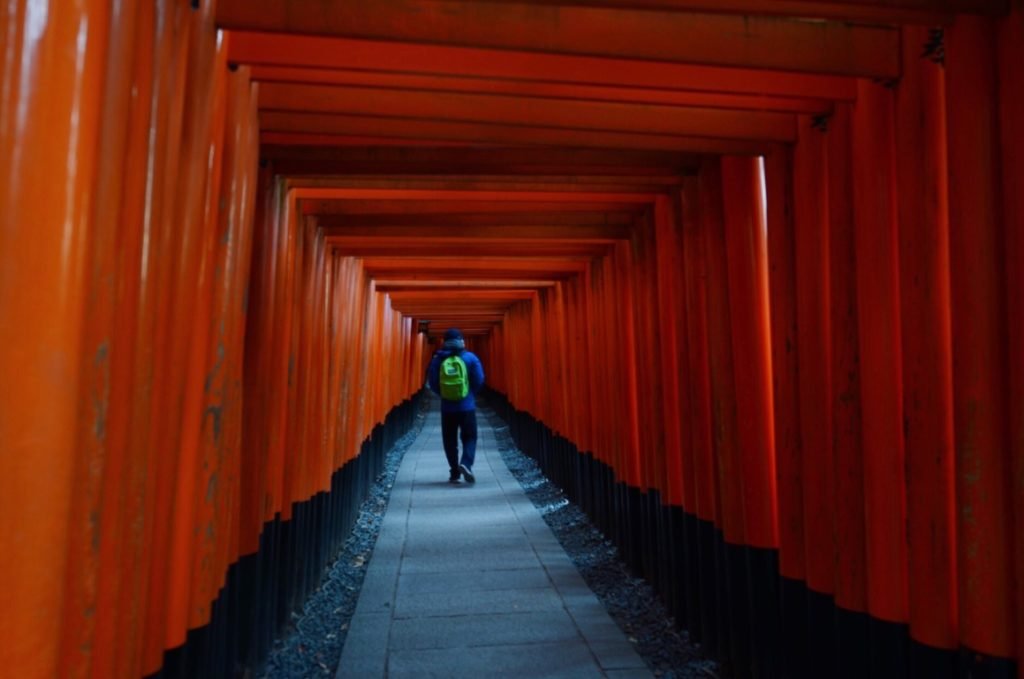
2-Week Japan Travel Itinerary
Here is a sample 2-week Japan travel itinerary for families:
Week 1:
- Day 1: Arrive in Tokyo and check in to your hotel. Spend the rest of the day exploring Tokyo’s famous districts such as Shibuya, Harajuku, and Shinjuku.
- Day 2: Visit Tokyo Disneyland or DisneySea.
- Day 3: Take a day trip to Nikko, a UNESCO World Heritage Site known for its beautiful temples and shrines.
- Day 4: Head to Hiroshima and visit the Peace Memorial Park and the nearby Miyajima Island.
- Day 5: Take a train to Kyoto and check in to your hotel. Spend the rest of the day exploring the city’s famous temples and shrines.
- Day 6: Visit Fushimi Inari Shrine, famous for its thousands of orange torii gates.
- Day 7: Take a day trip to Nara, home to the famous Todai-ji Temple and friendly deer population.
Week 2:
- Day 8: Take a train to Osaka and check in to your hotel. Spend the rest of the day exploring the city’s famous districts such as Dotonbori and Umeda.
- Day 9: Visit Universal Studios Japan in Osaka.
- Day 10: Head to Takayama, a charming town known for its well-preserved traditional buildings and delicious Hida beef.
- Day 11: Take a train to Tokyo and spend the day at Tokyo Skytree and Asakusa.
- Day 12: Visit the Tokyo National Museum and the nearby Ueno Park.
- Day 13: Take a day trip to Mount Fuji and visit the nearby lake, Kawaguchiko.
- Day 14: Pack and prepare for your departure.
This itinerary allows you to experience a variety of Japan’s famous destinations while also providing opportunities to explore some lesser-known, but equally interesting, places. The two-week itinerary also allows for more flexibility and time to enjoy each destination fully.
We spent two weeks in Japan, visiting Tokyo, Kyoto, Osaka, Nara, and Kinosaki. We saw and did a lot, but there’s still a lot we missed. So, while I’ve been to Japan four times, I feel like it’s a country I will always return to. Check out our 2-week Japan itinerary with kids.
3-Week Japan Travel Itinerary
If you have the time and energy to spend three weeks in Japan, this is a possible 3-week itinerary:
Week 1:
- Day 1: Arrive in Tokyo. Explore the city’s famous neighborhoods such as Shinjuku, Harajuku, and Shibuya.
- Day 2: Take a day trip to Nikko, home to the UNESCO World Heritage Site Toshogu Shrine.
- Day 3-4: Explore Tokyo some more, visiting places like the Tokyo Skytree, Meiji Shrine, and Tsukiji Fish Market.
- Day 5: Take a train to Kyoto.
Week 2:
- Day 6-8: Explore Kyoto, visiting temples such as Fushimi Inari, Kinkaku-ji, and Ginkaku-ji. Take a day trip to Nara to see the Todai-ji Temple and Nara Park’s Sika deer.
- Day 9: Take a train to Hiroshima. Visit the Peace Memorial Park and the nearby island of Miyajima.
- Day 10-11: Take a train to Osaka, and explore the city’s famous neighborhoods such as Dotonbori and Umeda.
- Day 12: Take a train to Hiroshima.
Week 3:
- Day 13-14: Take a train to Takayama, a historic mountain town known for its well-preserved traditional houses and morning markets.
- Day 15: Take a train to Kyoto.
- Day 16: Fly back to Tokyo.
- Day 17-18: Spend the last two days of your trip exploring Tokyo, shopping and trying out the local food.
- Day 19: Depart from Tokyo
Note: This is just a suggested itinerary and can be modified according to your preference and time frame. Also, Keep in mind that this itinerary assumes that you have a Japan Rail Pass, which allows you to take most of the trains at a discounted price.
Planning to Go to Japan
To go to Japan, there are a few things you will need to consider and plan for.
- Passport and visa: Make sure your passport is valid for at least six months beyond your planned stay in Japan and check if you need a visa.
- Flights: Look for flights to Japan’s main international airports such as Narita International Airport (near Tokyo), Kansai International Airport (near Osaka), and Chubu Centrair International Airport (near Nagoya).
- Accommodation: Reserve your accommodation in advance, whether it’s a hotel, a traditional ryokan, or a vacation rental.
- Transportation: Familiarize yourself with Japan’s transportation system, which is one of the most efficient in the world. You can easily get around Japan by train, subway, bus, or taxi. It’s also a good idea to get a Japan Rail Pass, which allows for unlimited travel on all JR trains, buses, and ferries, and can save you money.
- Itinerary: Plan your itinerary, including what to see, where to go, and what to do. Japan is a large country with a lot to offer, so it’s important to plan ahead to make the most of your trip.
- Money: Make sure you have enough yen for your trip. You can withdraw yen from ATMs, but not all ATMs accept foreign cards, so it’s best to have cash on hand.
- Insurance: Make sure you have travel insurance in case of any unexpected events during your trip.
- Pack appropriately: Pack clothing that is appropriate for the weather, comfortable walking shoes, and any necessary medication.
Japan can be a complex destination, and it’s important to plan ahead so you can enjoy your trip stress-free. With the right planning and preparation, your trip to Japan will be an unforgettable experience for you and your family.
How to Get Around Japan

Japan has one of the most efficient and convenient transportation systems in the world, making it easy to get around and explore the country.
- Train: Japan’s train system is extensive, reliable, and punctual. The Japan Rail (JR) pass allows for unlimited travel on JR trains, buses, and ferries and can be a cost-effective option for travelers who plan to do a lot of traveling.
- Subway: Japan’s subway system is also extensive and can be found in most major cities, including Tokyo, Osaka, and Nagoya. It’s a convenient and affordable way to get around, especially in cities where traffic can be heavy.
- Bus: Buses are another affordable and convenient way to get around, especially in areas where trains and subways don’t go.
- Taxi: Taxis are readily available in Japan, but they can be more expensive than other forms of transportation.
- Car rental: Renting a car is not recommended in Japan as the roads are often crowded and parking can be difficult to find. Additionally, most rental cars in Japan are not equipped with GPS systems and it’s also not common for people to drive in Japan.
- Bike rental: Renting a bike can be a great way to explore Japan’s smaller towns and rural areas.
- Walking: Walking is also a great way to explore Japan’s cities and towns, especially in places where cars and buses are not allowed.
Public transportation: Japan’s transportation system is known for its punctuality and efficiency, but it can also be crowded during peak travel times, especially in major cities. it’s a good idea to avoid rush hour if you’re traveling with kids.
Overall, Japan’s transportation system is very convenient, safe and easy to navigate, so you and your family can travel around Japan comfortably and hassle-free.
How Much to Travel to Japan
The cost of traveling to Japan can vary greatly depending on a number of factors, including the time of year, how long you plan to stay, and your travel style.
- Airfare: Airfare to Japan can vary greatly depending on the time of year and the airline you choose. Typically, you can expect to pay around $700 – $1,500 for a round-trip ticket from the United States.
- Accommodations: Japan offers a variety of accommodation options, from budget-friendly hostels and guesthouses to luxury hotels. A budget-friendly option would be a capsule hotel which typically cost around $40 to $80 per night. On the other hand, a mid-range hotel would cost around $100 to $250 per night, and a luxury hotel can cost $300 or more per night.
- Food: Japan is known for its delicious and diverse cuisine, and food costs can vary greatly depending on where you choose to eat. A meal at a budget-friendly restaurant or fast food chain will cost around $10 to $15, while a meal at a mid-range restaurant will cost around $20 to $30. On the other hand, a meal at a high-end restaurant can cost $50 or more.
- Transportation: Japan’s transportation system is one of the most efficient and convenient in the world, and costs can vary depending on the mode of transportation you choose. A one-way train or subway fare typically costs around $2 to $5, while a one-way bus fare typically costs around $3 to $5. Taxis can be more expensive, with fares starting at around $3 and increasing based on distance traveled.
- Activities and attractions: Japan offers a wide variety of activities and attractions, and costs can vary depending on what you choose to do. A visit to a temple or shrine typically costs around $5, while a visit to a theme park or museum can cost $20 or more.
- Souvenirs: Japan is famous for its souvenirs, and costs can vary depending on what you choose to buy. Traditional souvenirs like kimonos, fans, and calligraphy sets can be expensive, while other souvenirs like keychains and T-shirts are more affordable.
Overall, a budget of around $150 to $200 per day per person is a good estimate for a moderate trip to Japan, but it can vary depending on your preferences and travel style.
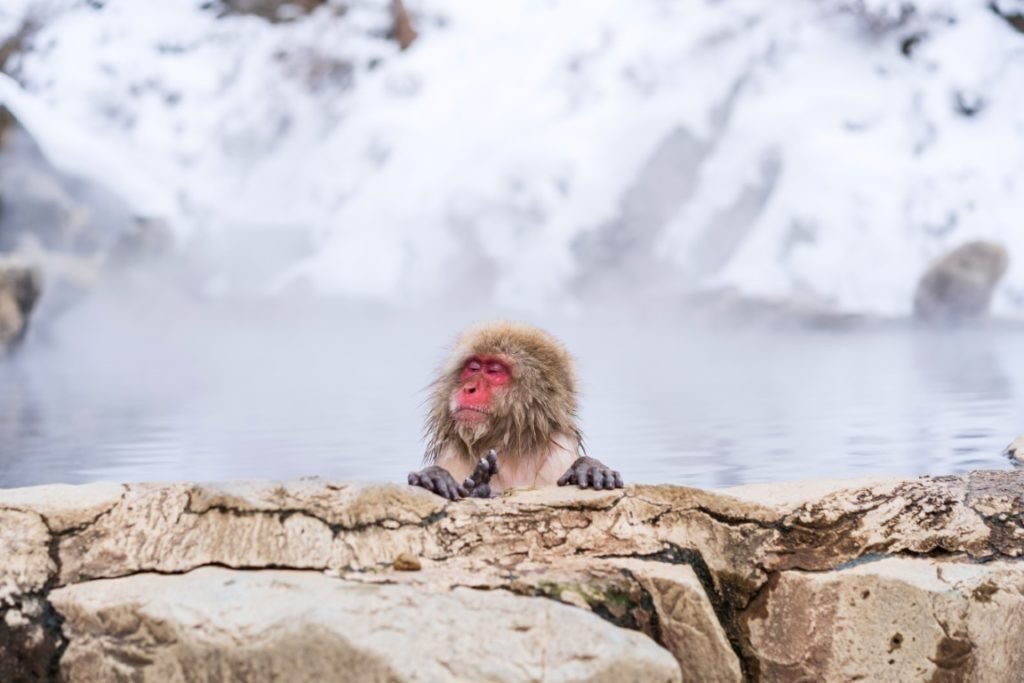
Is Japan Good for Kids?
Japan is a great destination for families with kids. The country is known for its safe, clean, and efficient transportation system, making it easy to get around with children. In addition, Japan offers a wide variety of activities and attractions that are suitable for kids, such as theme parks, aquariums, and zoos.
One of the most popular attractions for kids in Japan is Tokyo Disneyland and DisneySea, which are based on the original Disneyland in California. Other theme parks, like Universal Studios Japan, feature rides and attractions based on popular movies and TV shows.
There are also many zoos and aquariums in Japan, such as Ueno Zoo and Tokyo Sea Life Park, which offer a chance for kids to see a wide variety of animals up close. For example, the Okinawa Churaumi Aquarium is one of the largest aquariums in the world, and it’s a great place to see whale sharks, manta rays, and other marine life.
Furthermore, Japan is also home to many historical and cultural sites, like temples, shrines, and castles, that are fun and interesting for kids to visit. For example, the Hiroshima Peace Memorial Park and its Museum, which is a great place to learn about the history of the atomic bombing, it’s an important site for children to understand the importance of peace.
In terms of food, Japan offers a wide variety of kid-friendly options, such as ramen, sushi, and tempura. Many restaurants also offer children’s menus with smaller portions and simpler dishes.
Overall, Japan is a great destination for families with kids, offering a wide variety of activities and attractions that are both fun and educational.
What’s the best age to take a child to Japan?
It depends on the child and their interests. Japan is a country with a rich culture and history, and there are many activities and sights that can be enjoyed by children of all ages. However, children under the age of six may not be able to fully appreciate some of the more complex aspects of Japanese culture, such as visiting temples and shrines. And they can get easily bored. Therefore, a child who is at least six years old or older might be better suited for a trip to Japan.
How many days in Japan is enough?
The amount of time needed to explore Japan depends on the individual and their interests. Japan is a large and diverse country with a wide variety of activities and sights to see. Some travelers may be content with just a few days in Tokyo to experience the city’s modern culture, while others may want to spend several weeks traveling to different cities and regions to see more of the country.
As a general rule, 7-10 days would allow you to experience the main popular tourist destinations, such as Tokyo and Kyoto, and still have some time to relax. If you want to see more of the country and have a more in-depth experience, you may want to consider a trip of 2-3 weeks or more.
Is Japan cheap for vacation?
Japan can be an expensive destination for vacation, especially when it comes to accommodation and transportation. The cost of living in Japan is generally higher than in many other parts of the world, and this is reflected in the prices of goods and services.
Accommodation in Japan can be expensive, particularly in major cities like Tokyo and Kyoto. However, you can find budget-friendly options such as capsule hotels, hostels, and guesthouses that are more affordable. And if you go during the low season, you can get a bargain for accommodations.
Food in Japan can also be costly, particularly in tourist areas and at high-end restaurants. However, it’s still possible to find affordable options such as street food, local izakayas, and convenience stores.
Transportation in Japan can also be expensive, particularly if you plan to travel to multiple cities. However, Japan has an extensive and efficient public transportation system, so it’s possible to keep costs down by using trains and buses instead of renting a car.
Overall, Japan can be an expensive destination, but with careful planning and budgeting, it’s still possible to have a great vacation without breaking the bank.
Do they speak English in Japan?
English is not as widely spoken in Japan as it is in many other parts of the world, but it is becoming more common. Many Japanese people, especially young people and those working in the service industry, have a basic understanding of English and are able to communicate with tourists. However, not all Japanese people speak English, especially in rural areas or among older generations.
It’s always a good idea to have a translation app or a phrasebook handy in case of communication difficulties. Many major tourist destinations such as hotels, restaurants, and tourist information centers have English-speaking staff, and many signs and menus are also in English. However, it’s still a good idea to know some basic Japanese phrases, such as “Hello”, “Thank you”, “Please” and “Where is the toilet?”
In general, it’s not a huge issue for tourists as long as you are prepared for some language barriers and have some basic tools to communicate.
Japan travel with kids is highly recommended. It’s one of the countries that you can visit over and over. It just never gets old.




